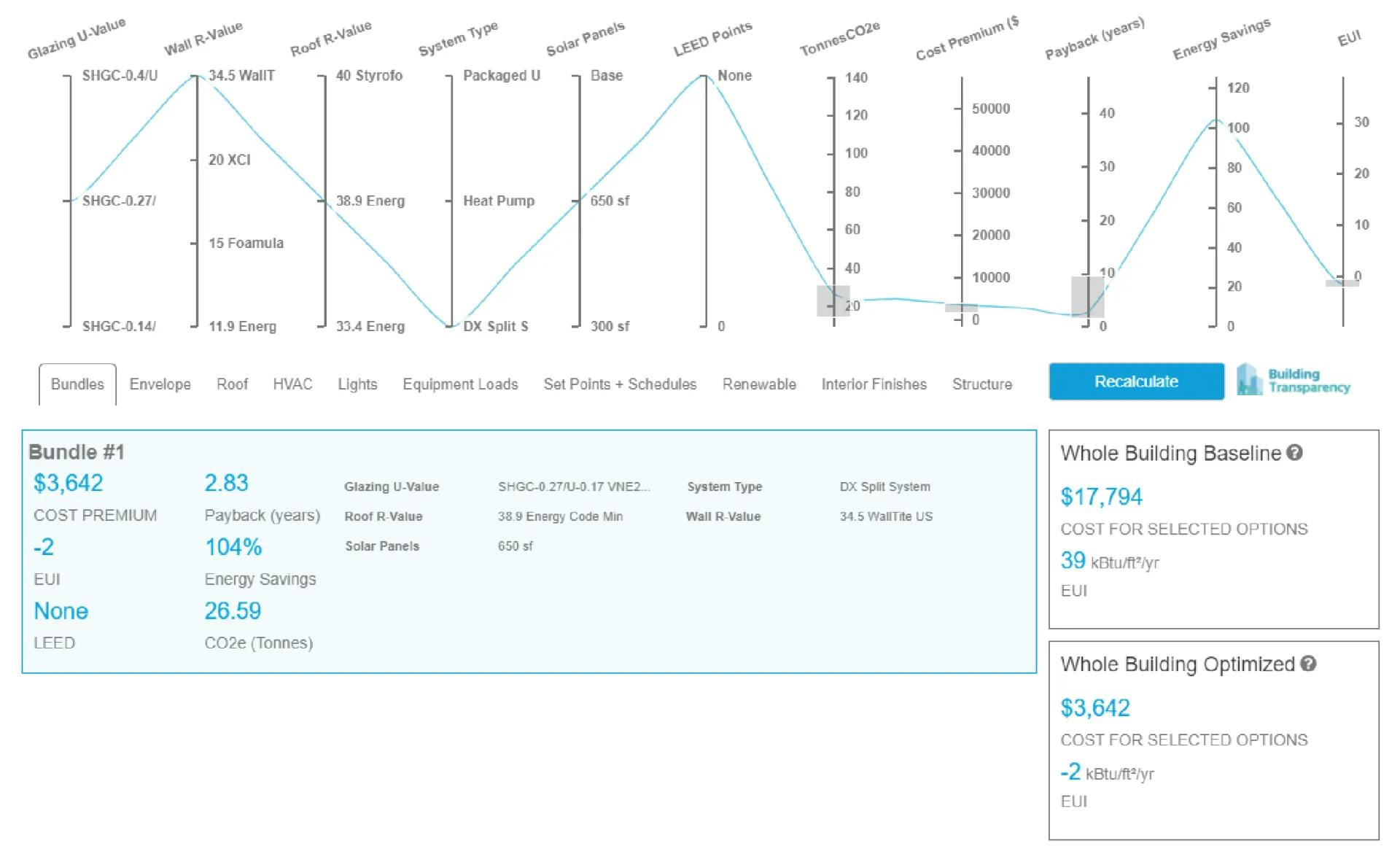Table Of Contents
Table Of Contents
Modern design
Modern design is a rarity in the mountains north of Atlanta. With few exceptions, houses tend to be kitschy recreations of log cabins so it was surprising when developers Paige Thornton and Kim Bucciero approached Patrick Chopson, AIA about designing an entire development of modern sustainable cabins. Two hours from Atlanta, the Nest at Brannon Ridge Reserve is an enclave of affordable Net Zero houses solar-powered with sweeping views of the Appalachian mountains. This cabin named the "Finch" by the developers served as the model home. Having designed over 200 homes in Atlanta while running his architecture firm Pattern r+d, Patrick employed cove.tool simulations to guide the design and cost optimization process. While many large projects use cove.tool to achieve high performance buildings like the student centers of Emory University and Georgia Tech, cove.tool works equally well for houses and small light commercial.
Below is the site plan with 10 ft contours showing how the house is perched on the edge of the slope.
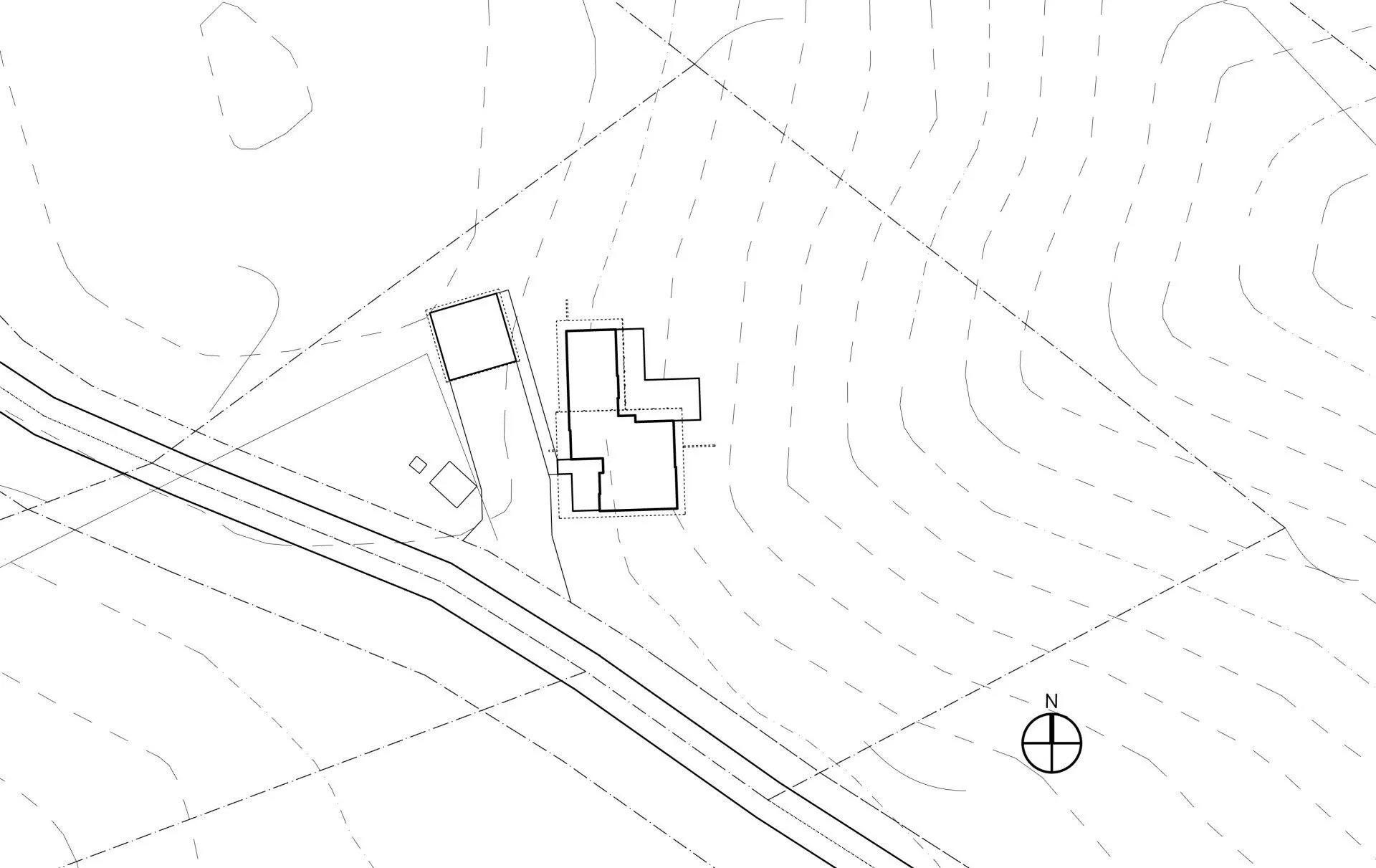
Climate Studies
To better understand the context, the architecture team started with better understanding the weather for the mountain community. While it is located in Georgia, the Knoxville weather file was a much better fit and was auto selected for the project using the automated cove.tool platform.
The diagram below features a few types of climate studies including (going clock-wise):
Relative humidity and temperature
This diagram helps understand if natural ventilation is a possibility for the project. In this case, not for the majority of the year.
Wind Diagrams
This diagrams breaks down the wind direction and amount for each month of the year. For example, it is possible to use natural ventilation in February, March, September, October, and the wind direction is North East - South West in those months.
Adaptive Comfort
This adaptive comfort chart showcases to the expected daily comfort profile for your site location. Using this Diagram, one can determine the likely heating, cooling and dehumidification schedule throughout a typical year.
Psychometric Chart
Using the graph, one can determine the number of hours per year a specific physical and thermodynamic condition occurs in a specific climate zone. Each opaque block represents the number of hours where a specific condition occurs.
Radiation Benefit
Also known as the radiation dome, this diagram chronicles the sun angle and solar intensity at which sunlight strikes an area. The Radiation dome is used in the design process to determine how to orient the building, and if the flexibility of orientation is not applicable, where to put the maximum glazing percentage in the project.
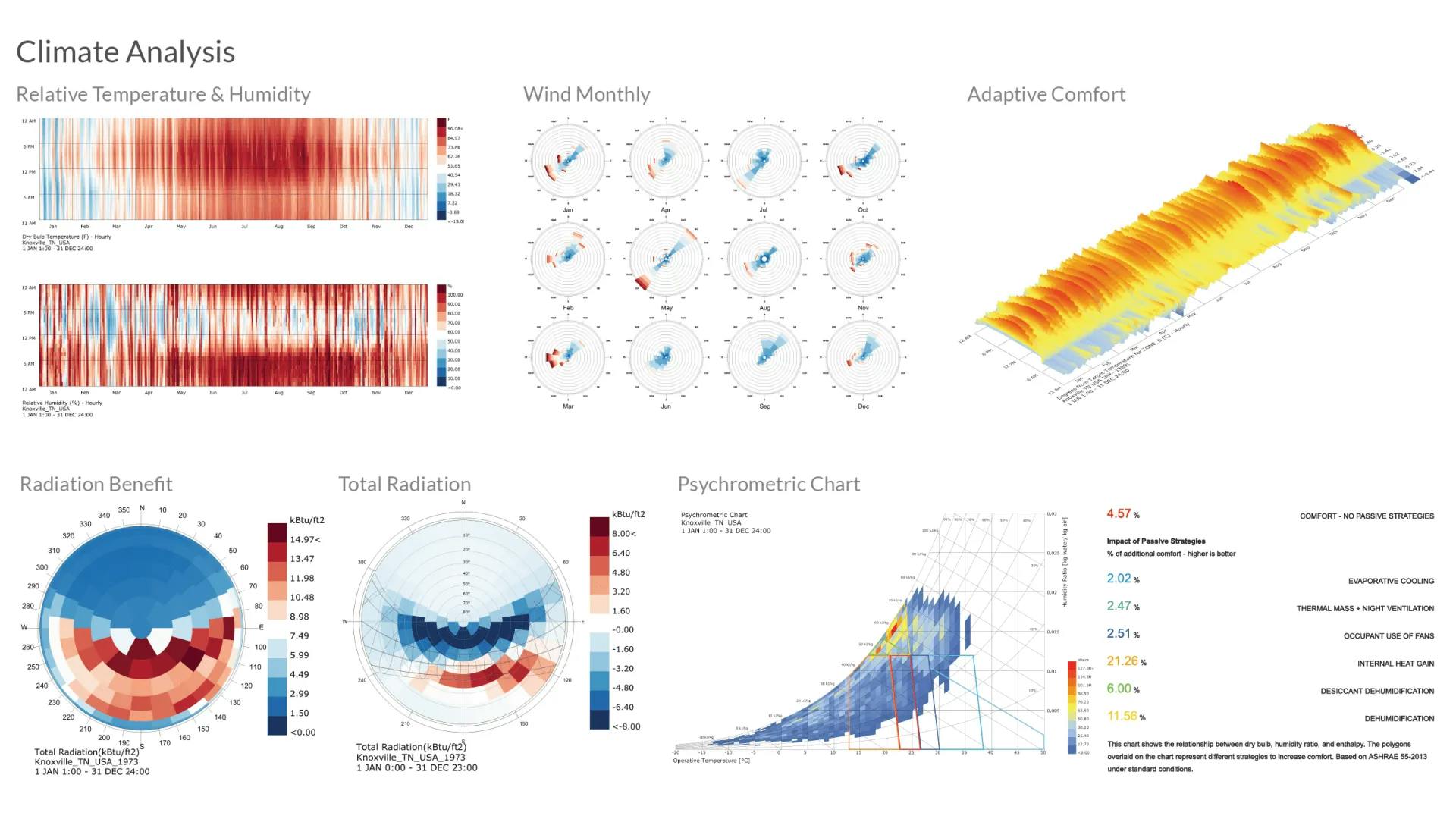
With the location in the mountains, the architect wanted to focus on making sure each space within the house had access to high daylight and views out. Below are some images from the completed design showcasing the daylight quality within the home. At only 1086 SF, the daylighting and expansive views are critical for making the house feel much bigger.

Getting incredible daylight quality while maintaining low solar heat gain requires careful thinking throughout data driven process. The architect tested out a range of massing and facade designs to study its impact on daylight penetration, glare, radiation, and energy. The following diagram features the team's study of those parameters to arrive at a design that not only met the architectural and aesthetic constraints, but also the performance requirements.
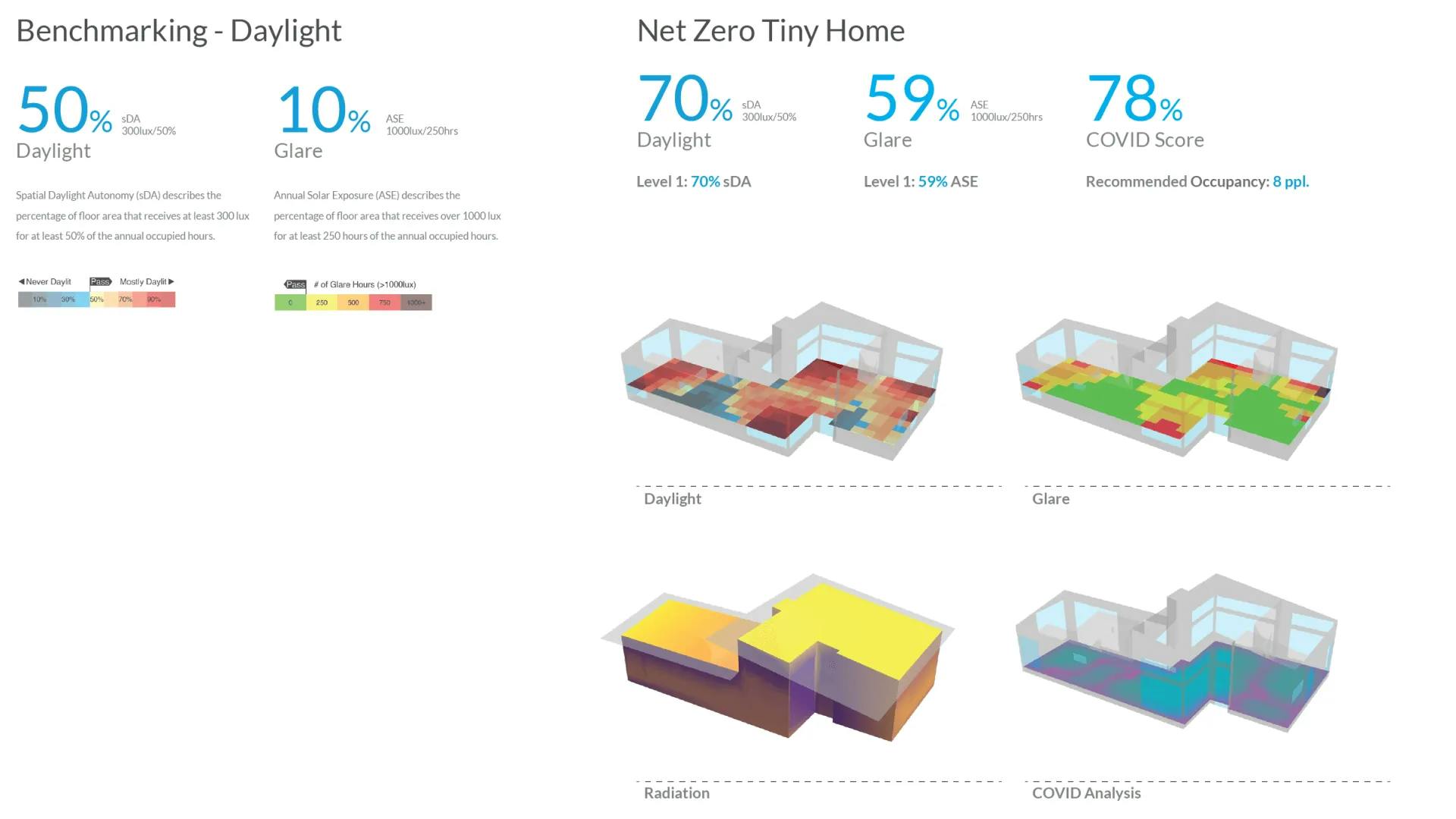
The architect started with an initial energy model for the project and found that with the code minimum requirements, the house would land at an EUI of 39. To meet the AIA 2030 targets, the house would need to be at 8 EUI, but the architect wanted to go even further and get to a 0 EUI for a net zero design. With this baseline model, the architect was able to study the key load drivers including HVAC, Lighting, and Equipment. Optimization was required to push the design further to get to net zero energy use.
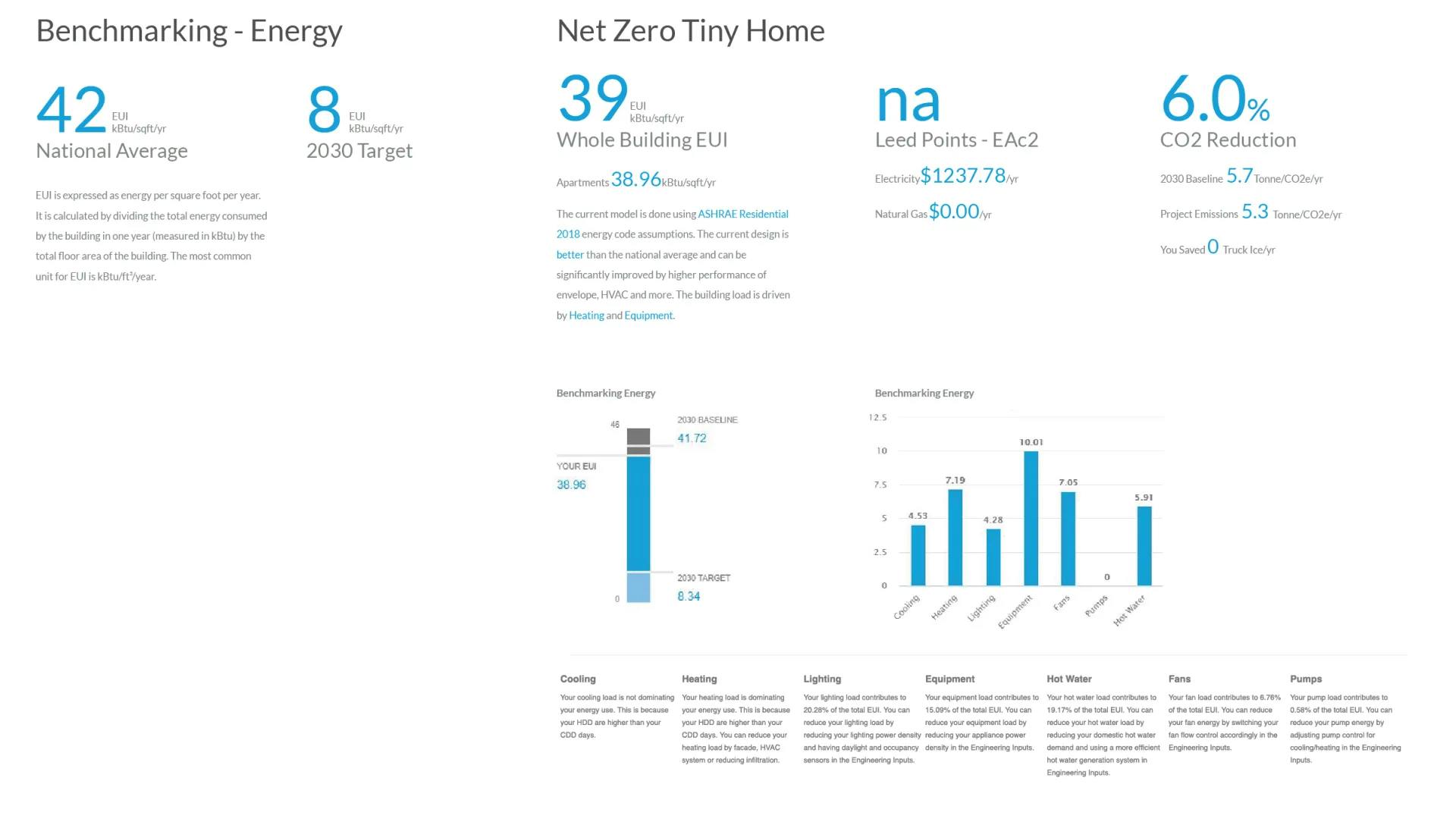
Getting to net zero included a whole range of options being studied. This included upgrading the roof insulation, the wall insulation, glass type, HVAC, and adding Photovoltaic Panels (PV). The architect wanted to know what was the cheapest way to get there. Should he upgrade the roof, or the wall, so should he just add photovoltaic panels to do all the heavy lifting? To study this, the architect ran the project through cove.tool's cost vs energy optimization to find the lowest cost option from the 108 possible options.
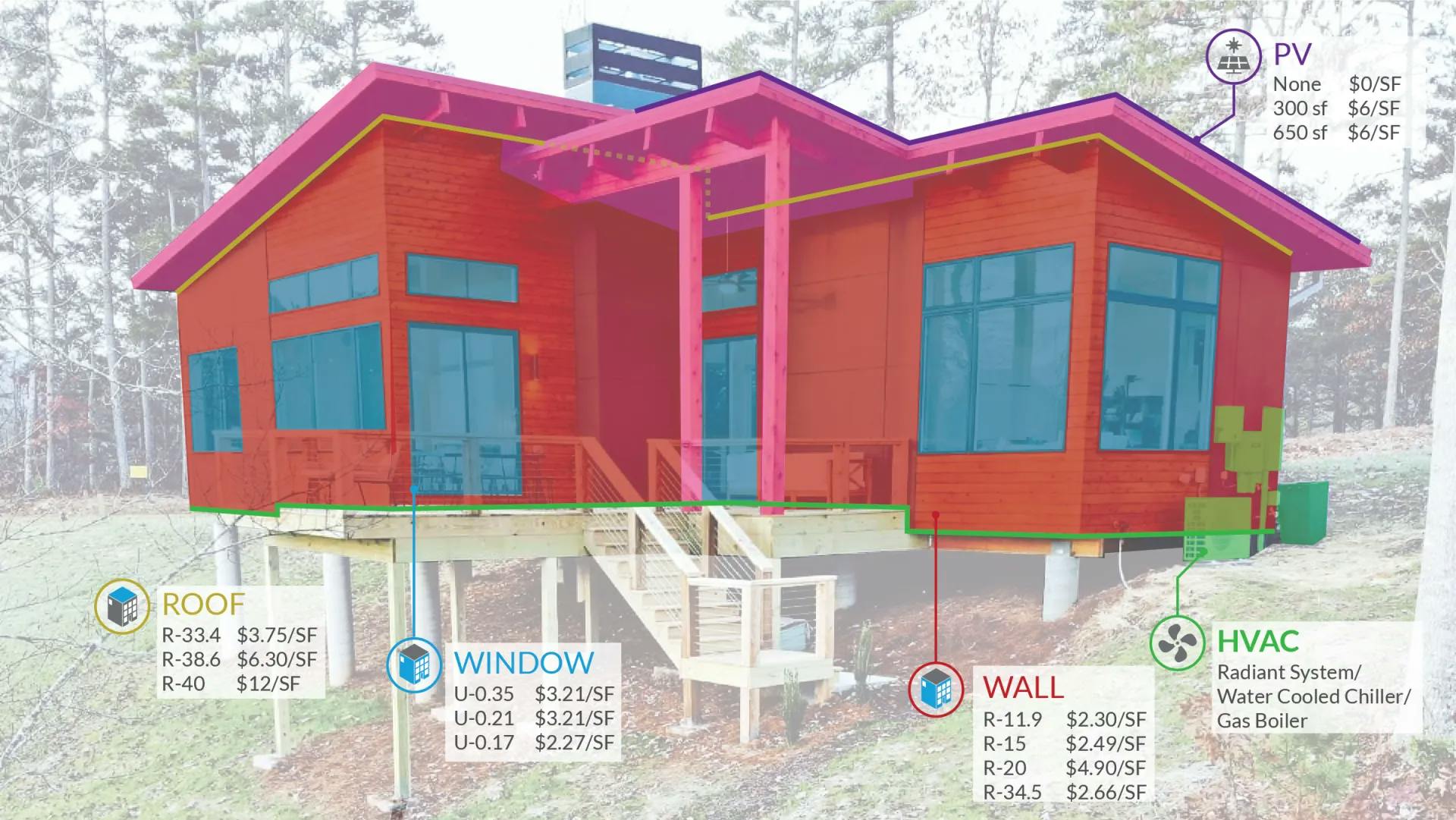
In the diagram below, each vertical axis is one possible decision, and each point within the axis is an option for that decision. As an example, the first bar shows 3 glass options, the second bar shows 4 wall options and so on. These options are then balanced against cost, payback years and energy targets. Of all 108 options, the architect utilized the dynamic slider to eliminate bundles that did not meet the project’s EUI target.
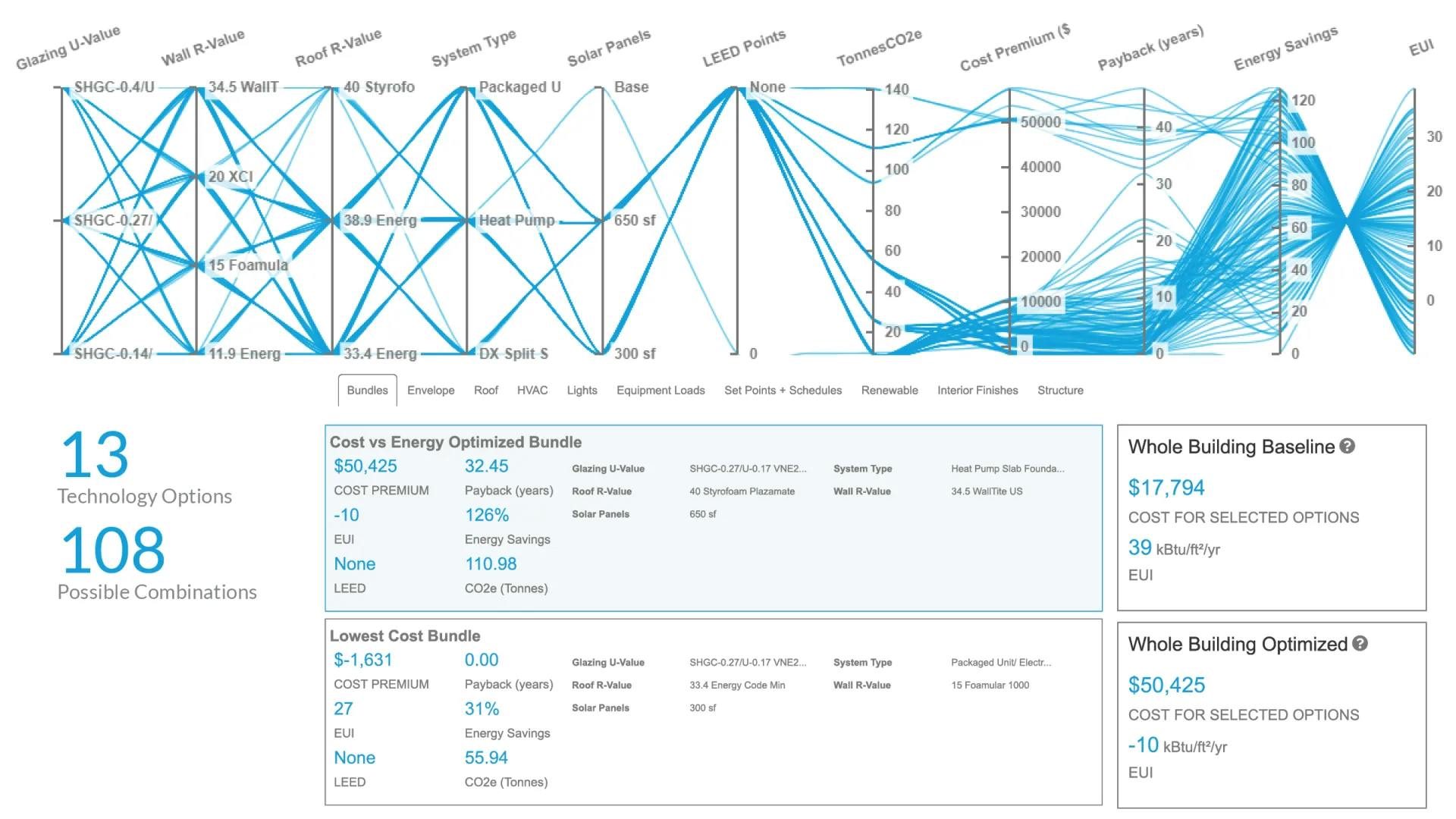
The lowest cost option included spray-foam in ceilings and floors to boost the insulation and wall-mounted Mitsubishi mini-split HVAC systems allowing for more efficient temperature control in each room. An addition of 10 solar panels on the roof covered the remainder of the power needs, though the cabin is connected to the local utility grid for power at night or on cloudy days. All of these optimizations only added a total of about $3642 to the project budget and would be paid back in under 3 years with the savings from utilities.
The project showcases that it does not require a large budget, a large team, or even a large project to use data to drive decisions.
